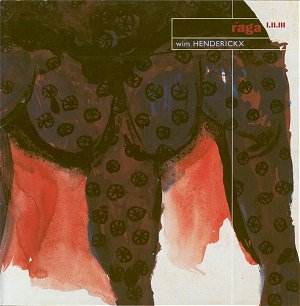 Composer: Wim Henderickx
Composer: Wim Henderickx
Works: Raga I (1994/6), Raga II “Tombeau” (1995), Raga III (1995)
Performers: Gert François (percussion), Leo De Neve (viola), Royal Philharmonic Orchestra of Flanders, Grant Llewellyn (conductor)
Recording: De Blauwe Zaal, deSingel, Antwerp, July 1998
Label: MEGADISC MDC 7833
Wim Henderickx, a significant voice in contemporary classical music, has carved a niche for himself by weaving intricate tapestries of sound that draw upon both Western compositional techniques and Eastern philosophical ideas. His large-scale cycle, Ragas, showcases his ability to transcend mere imitation of Indian music by ingeniously reinterpreting its elements within a Western context. Composed between 1994 and 1996, the three works presented here each stand as distinct explorations yet share a common structural ethos, characterized by symmetrical bi-partite forms and the development of simple melodic cells into complex, evolving structures.
The performance under Grant Llewellyn’s direction captures the essence of Henderickx’s vision beautifully. In Raga I, which features a diverse palette of percussion instruments, including traditional Japanese temple bells and African djembés, the soloist Gert François navigates the delicate interplay between lyrical expression and kinetic energy. The first half of the piece unfolds in a gentle lyrical manner, allowing the orchestration to shimmer with subtle textures. The transition into the second half is marked by a frenetic toccata that propels the music forward with exhilarating speed. François’ command over the varied sounds and rhythms is commendable, showcasing both technical prowess and interpretive sensitivity.
Raga II, subtitled “Tombeau,” shifts the focus to a more symphonic approach. Opening with an ethereal atmosphere, the music gradually blooms into a rich sonic landscape. The dialogue between the two solo violins and the orchestra is particularly striking, as Henderickx’s writing allows moments of stillness to coexist with crescendos that build toward climactic waves of sound. The second half takes on a more agitated character, which Llewellyn deftly navigates, maintaining balance between the lush orchestration and the delicate solo lines. This piece stands out as a testament to Henderickx’s ability to create a cohesive musical narrative that is both contemplative and dramatic.
In Raga III for viola and orchestra, Leo De Neve’s performance is marked by an evocative quality that often recalls the sarangi, an Indian string instrument. The initial part of the piece develops gradually, with De Neve employing quarter-tone glissandi and repeated notes to evoke a sense of improvisation. This is a pivotal moment, as it reinforces Henderickx’s intention of capturing the spirit of Indian music while remaining firmly rooted in Western classical traditions. The viola’s lyrical lines dance with rhythmic vitality, particularly in the latter section, where the energy becomes infectious, culminating in an ecstatic coda aptly titled “Evening Prayer.”
The recording quality is commendable, allowing the intricate textures of Henderickx’s orchestration to emerge with clarity and warmth. The engineering captures the dynamic range of the performances, ensuring that the subtleties of the percussion in Raga I are as pronounced as the full orchestral forces in Raga II. This balance is crucial, as Henderickx’s music often shifts dramatically in texture and intensity.
Henderickx is among the most endearing composers of his generation, and this cycle of Ragas is a definitive highlight of his orchestral output. The performances are vibrant and committed, showcasing not only the composer’s inventiveness but also the performers’ deep understanding of the material. This recording serves as an essential entry point for listeners seeking to explore the rich intersections of Eastern and Western musical traditions, and it stands as a robust testament to the power of contemporary classical music.



